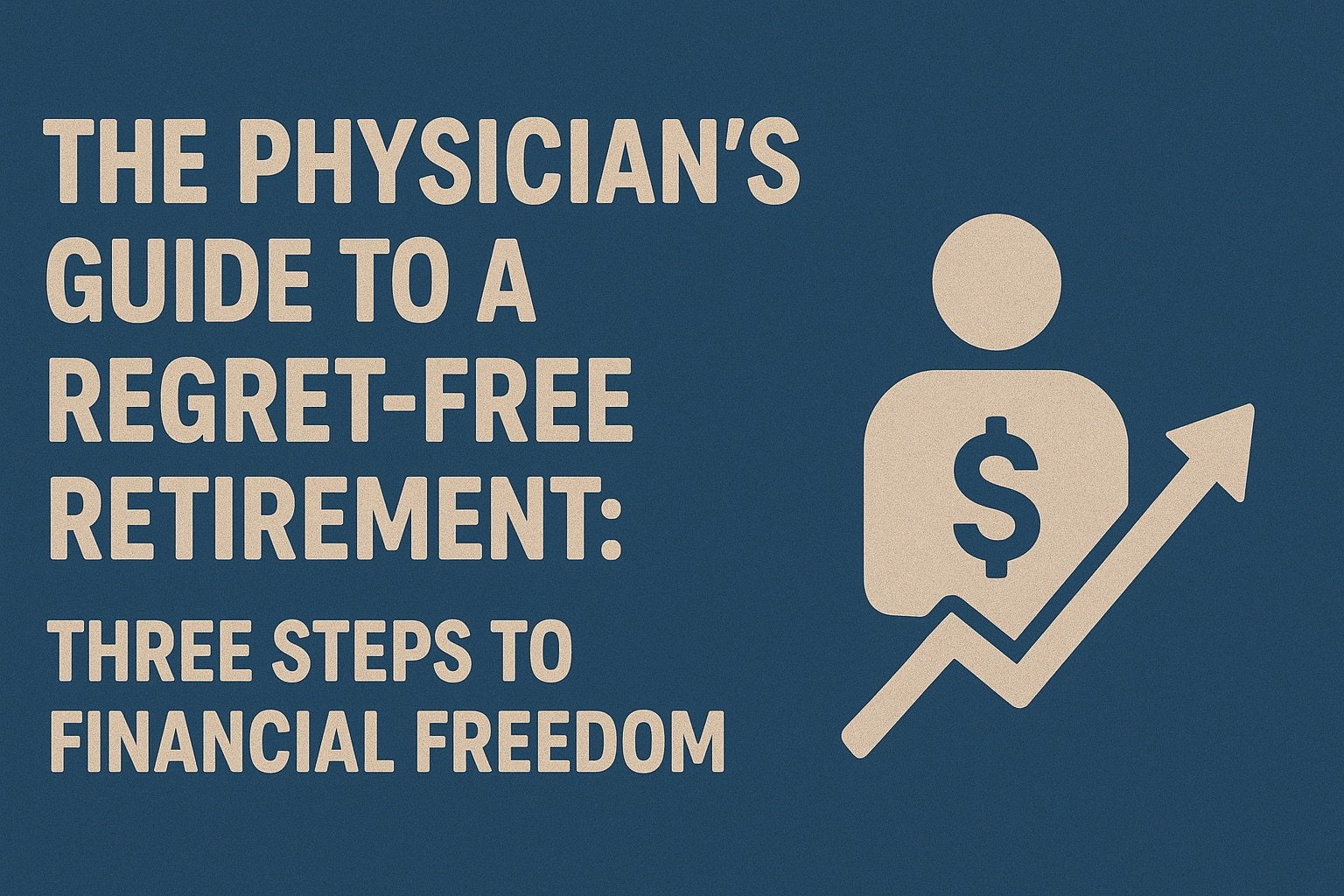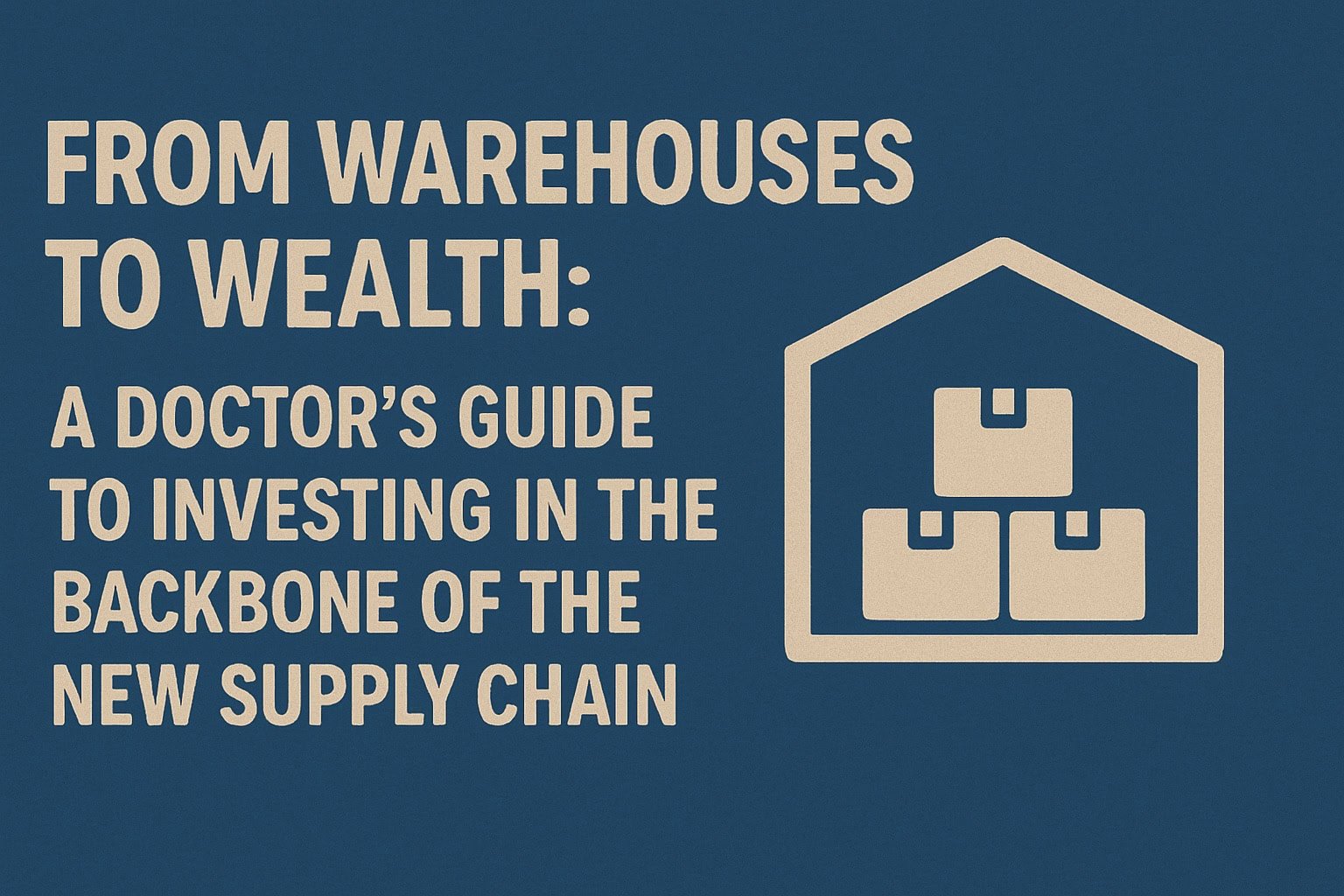Budgets come and budgets go. Tax reforms make headlines, but then they settle quietly into the tax code as if they always existed.
Most of us, especially those of us earning well into the six figures, know the drill by now.
But something about the bill that passed on the 4th of July, 2025, still has people buzzing. Maybe it’s the…unique name. Maybe it’s what’s in it. Maybe it’s both.
One thing’s for sure: if you’re a high-earning physician or any high-income professional trying to keep your financial life steady, there’s a lot to unpack.
The “One Big Beautiful Bill Act” (OBBBA) is more than a branding effort. It’s a sprawling, 1000+ page, high-stakes set of reforms, many of which are laser-focused on taxes.
And if ever there was a bill that attempted to tackle everything but the kitchen sink, it would be the OBBBA.
The bill is a full-scale restoration of the 2017 Tax Cuts and Jobs Act (and then some) and delivers big for high-income earners.
Let’s break down what you need to know.
Don’t miss out on How The Big, Beautiful Bill Is Going After Foreign Investors
Table of Contents
ToggleIndividual, Trust, and Estate Income Tax Rates
Under the OBBBA, the income tax rate reductions established by the TCJA are preserved.
The top marginal rate remains at 37% for individuals, trusts, and estates. Previously set to sunset at the end of 2025, these rates are not made permanent.
This permanence ensures that high-income earners can plan with a clearer view of long-term tax exposure.
For trusts and estates, the 37% rate still applies at a much lower threshold than for individuals, so compressed brackets continue to demand careful fiduciary tax management.
Capital gains and qualified dividend income retain their existing treatment under the TCJA framework, with a top marginal rate of 20%.
As before, the Net Investment Income Tax (NIIT) of 3.8% continues to apply to high earners, resulting in a combined federal rate of up to 23.8% on certain investment income.
Beginning in 2026, itemized deductions for taxpayers in the top 37% bracket will be limited to a 35% benefit.
This effectively repeals the Pease limitation, capping the value of deductions regardless of the amount donated, deducted, or expensed.
This affects charitable contributions, mortgage interest, and state taxes. In effect, the government is decoupling the marginal benefit of deductions from the marginal tax rate.
Corporate Income Tax Rate
The OBBBA maintains the flat 21% corporate income tax rate that was instituted by the TCJA.
Despite speculation that the current administration might push for a higher corporate rate, particularly in light of global minimum tax negotiations and fiscal pressures, the final version of the law holds the line.
This permanence provides predictability for medical practices structured as C corporations and for physicians with passive investments in corporate entities.
Notably, the corporate Alternative Minimum Tax (AMT) of 15%, introduced in the Inflation Reduction Act (IRA) of 2022, remains intact and is unaffected by the OBBBA. (I say “notably” because back in June, it seemed like this would not be the case.)
As a result, large corporations, especially those with financial statement profits exceeding $1 billion, must still navigate dual reporting requirements and minimum tax exposure.
Federal Gift, Estate, and GST Taxes and Exemptions
The OBBBA makes permanent the generous estate, gift, and GST tax exemptions that were at risk of dropping drastically under the original TCJA expiration..
Beginning January 1, 2026, and indexed for inflation, the exemption is locked at $15 million per individual, or $30 million per married couple.
That represents a meaningful increase over the 2025 exemption level of approximately $13.99 million (adjusted for inflation), and eliminates any uncertainty around the 2026 sunset.
Importantly, the 40% maximum tax rate on estates, gifts, and GST remains unchanged under this law.
Additionally, the $60,000 exemption for non-resident, non-citizen individuals owning U.S. situs assets, like U.S. real estate or securities, stays in place, and there were no other structural changes to estate/gift tax rules.
State and Local Tax (SALT) Deduction
The OBBBA raises the longstanding $10,000 cap on the State and Local Tax deduction to $40,000 for individual filers with modified adjusted gross income (MAGI) less than $500,000.
Indexed annually at a modest 1%, this cap holds through 2029, after which it reverts to $10,000.
Notably, the law keeps intact the popular Pass‑Through Entity Tax (PTET) workaround, which allows partnerships and S‑corporations, including those in professional services, to deduct state taxes at the entity level to bypass the SALT cap.
The House version sought to limit this for specified service trades like doctors, accountants, and lawyers, but those restrictions were stripped out in the Senate draft and did not reappear in the final version.
That preserves a powerful tax‑planning avenue for high‑income professionals, especially in high‑tax states.
Take a look at The First 100 Days and How Healthcare Has Fared In The New Era.
Qualified Business Income (QBI) Deduction
Though not always top of mind, the QBI deduction, which allows a 20% deduction on pass‑through business income, remains fully permanent under OBBBA.
It’s important to note, however, that phase-out thresholds for specified service trades or businesses (SSTBs) have been significantly expanded, allowing many high earners to reclaim or retain deductions.
The deduction now phases out at $75,000 for single filers, and $150,000 for joint filers, offering relief where previously structured income spikes could have triggered a full denial of the deduction.
For physicians whose practices are structured as S-corporations or LLCs, this expands eligibility and brings back a critical tax-saving mechanism, reinforcing the importance of income timing and retirement plan strategy in tax planning.
Qualified Small Business Stock (QSBS) Exclusion
The OBBBA makes QSBS (capital gains from stock in qualifying small C corporations) more investor-friendly.
It does so by:
- Raising the asset ceiling. Issuer firms can now have up to $70 million in assets, which is up from $50 million.
- Increasing the gain cap. Taxpayers can exclude up to $15 million of gains per issuer (or 10x basis, whichever is greater). This is up from the old $10 million cap.
- Introducing phased holding periods. 50% exclusion if held for 3 years, 75% for 4 years, and 100 for 5+ years.
QSBS purchased on or before July 4, 2025, still qualifies for the full 100% capital gains exclusion (up to the $10 million limit) as long as all existing criteria, including the five-year holding period, are satisfied, regardless of the new tiered rules.
Charitable Contributions
The OBBBA offers mixed results for charitable giving, and how it affects you depends largely on your income.
For households that don’t itemize, possibly early-career physicians or those with fewer deductions, the bill introduces a new above-the-line deduction starting in 2026.
It allows individuals to write off up to $1,000 ($2,000 for joint filers) in charitable donations even while claiming the standard deduction, a shift aimed at reigniting small-dollar philanthropy after the 2017 tax law made itemizing less common.
However, for higher-earning professionals (the very group that fuels most charitable giving), this new framework cuts into the value of large donations.
Two limitations now apply: deductions can only offset income taxed at a maximum rate of 35%, and there’s a new 0.5% AGI floor before any deduction counts.
So a doctor with $1 million in AGI would need to give more than $5,000 before receiving any tax benefit. In short, the wealthier you are, the more your donations get discounted for tax purposes.
Final Thoughts
The OBBBA introduces several changes that will affect how high-income professionals like physicians manage their taxes and long-term planning strategies.
This is a good time to sit down with a tax advisor and review your current strategies.
Financial advisors and estate attorneys should act proactively with clients to secure high-exemption gifts, optimize charitable strategies, and adjust income timing.
With the rules now clearer than they have been in years, the window for meaningful, long-term planning is wide open.
In case you missed it: The Hippocratic Divide: How the “Beautiful Bill” Fractures American Healthcare.
FAQs
Q: When will the OBBBA take effect?
Most provisions would take effect starting January 1, 2026, though some items like changes to Qualified Small Business Stock (QSBS) treatment will apply retroactively to stock acquired after July 4, 2025.
Q: Will the Qualified Business Income (QBI) deduction still be available?
Yes. The 20% QBI deduction has been made permanent by the OBBBA and includes expanded phaseout ranges, even for specified service businesses like medical practices. This means that even higher‑earning physicians may now qualify, provided they manage income properly through retirement contributions, planning strategies, or entity structure adjustments.
Q: How does the Act affect QSBS?
QSBS acquired on or before July 4, 2025, remains eligible for the full 100% capital gains exclusion (subject to the $10 million cap and a five-year holding period). After that date, the exclusion would drop to 50%–75% depending on your holding period, making early planning essential if you’re considering equity sales.
Q: What happens to the SALT deduction cap?
The OBBBA raises the SALT deduction cap from $10,000 to $40,000 for households with AGI under $500,000, with the cap increasing by 1% annually. After 2029, the cap will revert permanently to $10,000.
Q: Are there new limits on charitable deductions?
Yes. High-income earners would face a new 0.5% AGI floor before itemized charitable deductions could be claimed. For example, a physician with $1 million in AGI would only begin deducting charitable donations after giving $5,000. The Act would also cap total itemized deductions, further limiting benefits from large donations.
Q: What can I do to prepare right now?
To prepare for the OBBBA’s sweeping tax changes, physicians should meet with a qualified CPA or tax attorney well before the end of 2025. High earners in states like California or New York should also revisit their SALT deduction game plan, since the new expanded cap phases out at higher AGI levels.













